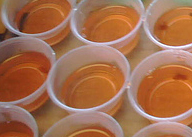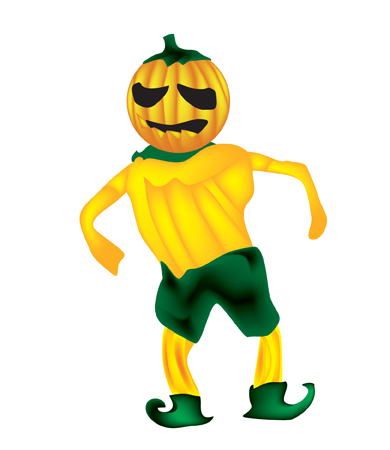Unmasking Halloween Sadism
Being frightened is part of the Halloween experience, but when it comes to sending our kids trick-or-treating, several studies suggest we’re worrying about the wrong threat.
Joel Best, a professor of sociology and criminal justice at the University of Delaware, has been tracking “Halloween sadism” — the practice of giving contaminated candies to trick-or-treaters — since the early 1980s. In a short paper summarizing his research on the subject, which he updates annually, he reports that poisoned treats are best seen as legend. “I have been unable to find a substantiated report of a child being killed or seriously injured by a contaminated treat picked up in the course of trick-or-treating,” he writes. A survey of news reports finds no more than two reported incidents of this type in any given year since 1982, and Best notes that researchers who follow up such stories find they are usually hoaxes.
But there is danger lurking out there for young ghouls and goblins. In 1997, the Center for Disease Control’s National Center for Injury Prevention and Control issued a scary report on traffic accidents involving trick-or-treaters. According to its data, published in the “Morbidity and Mortality Weekly Report,” “during 1975-1996, the number of deaths among young pedestrians was fourfold higher on Halloween evening when compared with the same time period during all other evenings of the year.” The CDC adds that its analysis may undercount deaths because its statistics do not include crashes that occur in driveways, parking lots or sidewalks.
The agency points to a number of factors contributing to the annual spike in fatalities, including black costumes that make children hard for drivers to spot and masks that “restrict the peripheral vision and hearing” of the youngsters wearing them. Given these dangers, the report concludes, children should be under constant adult supervision as they walk from house to house.
We Remember Those Pumpkin-Flavored Jell-O Shots
A 2007 study in the journal Environment and Behavior made the none-too-surprising finding that for many college-age Halloween revelers, bingeing on candy has been replaced by binge drinking. Researchers from Virginia Polytechnic Institute and State University gave breathalyzer tests to young adults partying in nearby downtown Blacksburg on Halloween night. Those wearing costumes were significantly more intoxicated than their casually dressed peers, with more than 60 percent registering over the legal limit for driving under the influence. Of those in normal street clothes, only 25 percent reached the DUI level of intoxication.

The report reinforces the findings of a large-scale 2002 Michigan State University study that reported students celebrating Halloween tend to drink more than usual, and a larger percentage of them get drunk than on a non-holiday night of imbibing. “Taken together,” the Virginia researchers conclude, “these findings are further evidence of an emerging style of celebration drinking among college students.”
Rotten Eggings
And then there’s the issue of flying eggs. Writing in the October 2006 issue of Emergency Medicine Journal, Dr. R.M. Stewart of Royal Liverpool Hospital’s eye unit observes that “the practice of throwing raw eggs either at buildings or innocent passers-by” seems to be an increasingly common Halloween prank. She and two colleagues surveyed admissions to the hospital’s primary care department over a 14-month period that included two Halloweens and found 13 ocular injuries attributed to “assault with a raw egg.” Eight of these were considered serious; all but one of the patients recovered well.

Dr. Stewart and her colleagues were particularly incensed by a leading local supermarket that re-branded the protein-rich breakfast staples as “mischief eggs” in the days leading up to Halloween. Calling such advertising “irresponsible and, at worst, almost incitement to this type of assault,” they note the public has been long warned of the dangers of handling fireworks. The researchers suggest a similar public education campaign about the serious consequences of egg in your eye.
Stereotypes in Costume
Politically correct parents have a new dilemma: How do you dress your children to go trick or treating without reinforcing gender stereotypes? You won’t find the answer at Wal-Mart.

For her 2000 study “The Pink Dragon is Female” in Psychology of Women Quarterly, Canadian sociologist Adie Nelson analyzed 469 ready-made Halloween costumes and sewing patterns sold at craft and department stores. She found that “feminine costumes were clustered in a narrow range, depicting beauty queens, princesses and other exemplars of traditional femininity,” while male costumes “emphasized the warrior theme of masculinity and were more likely to feature villains, especially agents or symbols of death.”
While girls often dress up in ball gowns or bridal dresses, boys are “more likely to depict characters who possessed supernatural powers or skills,” Nelson wrote. To look at it another way, the girls dressed in costumes depicting passive roles, while the boys were action-oriented. So are we brainwashing our pre-teens into conforming to rigid concepts of masculinity and femininity? Perhaps the witch — who is, after all, a symbol of feminine power — needs to make a comeback.
Halloween vs. Day of the Dead
Ghosts and goblins are generally not considered culture warriors, but as symbols associated with American Halloween spread south of the border, they are being criticized as “symptomatic of U.S. imperialist aggression,” says Stanley Brandes, an anthropologist at the University of California, Berkeley.
Brandes writes about the symbolic competition between the American celebration of Halloween and the traditional Mexican holiday of the Day of the Dead in a 1998 paper in the Journal of American Folklore, which was later expanded into his 2007 book, Skulls to the Living, Bread to the Dead. The two holidays, he notes, are similar: Both deal with death in a lighthearted way, and both feature ritualized begging. What’s more, they’re celebrated only two days apart, since El Día de los Muertos is Nov. 2.

“The incursion of Halloween into Mexican national territory, and the incorporation of Halloween symbols into Day of the Dead celebrations, have become rallying points” for those intent on preserving a unique Mexican identity, he writes. “Key clerics in the northern border states actually have prohibited Halloween celebrations on the grounds that the holiday, which they deem secular and commercial, represents a threat to the sanctity and very existence of the Day of the Dead.”
As evidence of resistance to the Halloween invasion from the north, Brandes points to a large mural in the state of Morelos that shows “a soccer player kicking a gringo off his feet. The gringo’s head is a gigantic jack-o’-lantern. The accompanying text reads, ‘No to Halloween. Preserve your cultural traditions.'”
Sign up for our free e-newsletter.
Are you on Facebook? Become our fan.
Follow us on Twitter.




